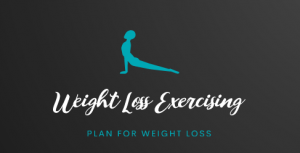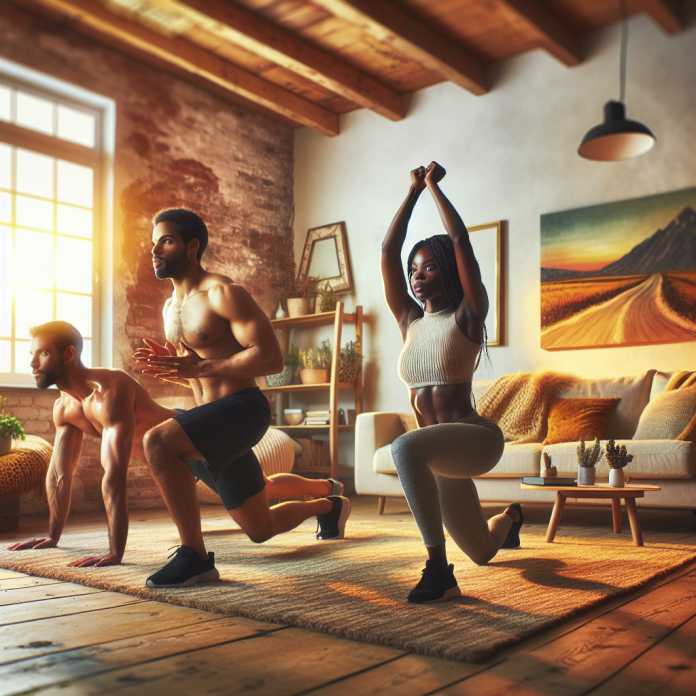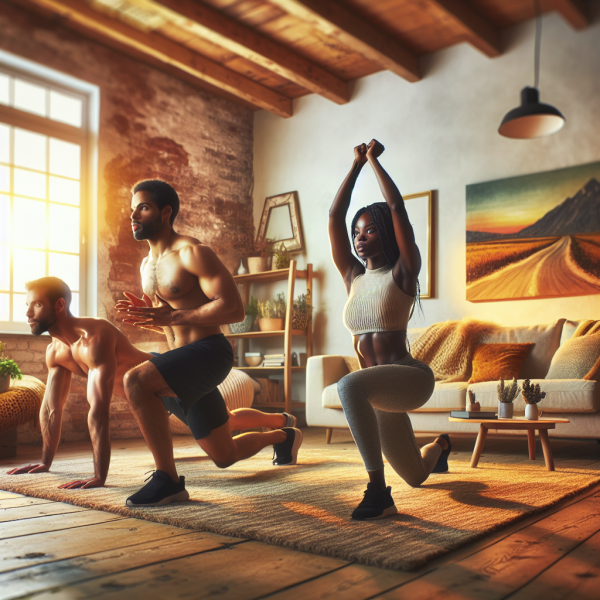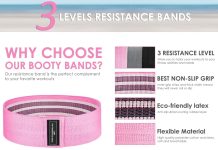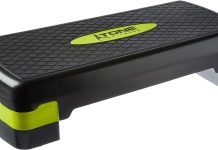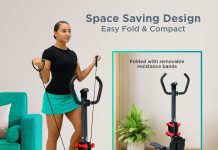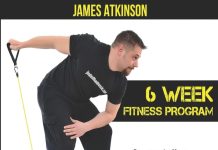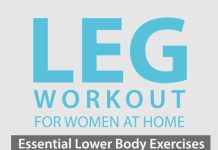So you’ve decided to kickstart your fitness journey and get moving, but you don’t have access to a gym or any fancy exercise equipment. Don’t fret! In this article, we’ll show you how to start working out at home without any equipment. Whether you’re a beginner or an experienced fitness enthusiast, we’ve got you covered with simple yet effective exercises that will help you break a sweat and achieve your fitness goals from the comfort of your own home. Get ready to feel stronger, more energized, and ready to take on the world!
Review contents
Setting Your Fitness Goals
Identify your fitness goals
Before embarking on your fitness journey, it’s important to identify your goals. Take a moment to reflect on what you want to achieve with your workouts. Are you looking to lose weight, build muscle, improve flexibility, or increase stamina? By having a clear understanding of what you want to accomplish, you can tailor your workouts to meet those specific goals.
Set measurable and realistic goals
Once you’ve identified your fitness goals, it’s crucial to set measurable and realistic targets. Setting goals that are specific and quantifiable will help you stay focused and motivated. For example, instead of saying, “I want to get stronger,” set a goal such as, “I want to be able to do 10 push-ups in a row.” Additionally, make sure your goals are realistic and attainable within a reasonable timeframe. This will prevent you from feeling discouraged or overwhelmed.
Establish a workout schedule
To make working out a consistent part of your routine, it’s essential to establish a workout schedule. Determine how many days a week you can commit to exercising and select specific time slots that work best for you. By treating your workouts as appointments with yourself, you’ll be more likely to stick to your schedule. Remember, consistency is key when it comes to achieving your fitness goals.
Create a dedicated workout space
Having a designated workout space in your home can greatly enhance your fitness experience. Find an area in your home that is spacious enough to accommodate your exercises and has enough ventilation. Clear out any unnecessary clutter and create an environment that is conducive to physical activity. By having a dedicated workout space, you’ll be able to focus and fully immerse yourself in your workouts.
Choosing the Right Workout Programs
Bodyweight exercises
Bodyweight exercises are a fantastic way to work out at home without equipment. These exercises rely solely on the resistance provided by your own body weight, making them accessible to people of all fitness levels. Some popular bodyweight exercises include push-ups, squats, lunges, and planks. Incorporating bodyweight exercises into your routine can help improve strength, endurance, and overall fitness.
High-intensity interval training (HIIT)
HIIT workouts are a time-efficient and effective way to get your heart rate up and burn calories. These workouts involve short bursts of intense exercise followed by periods of active recovery. HIIT exercises can be conducted using bodyweight movements, such as jumping jacks, burpees, or mountain climbers. The combination of high-intensity intervals and brief rest periods can help boost cardiovascular fitness and enhance fat burning.
Yoga and Pilates
Yoga and Pilates are excellent options for improving flexibility, core strength, and overall body awareness. These practices focus on controlled movements, breathwork, and proper body alignment. Whether you prefer the dynamic flow of yoga or the precise movements of Pilates, both disciplines offer a wide range of exercises that can be done at home. You can find countless online classes or tutorials to guide you through these workouts.
Dance workouts
If you enjoy moving to the rhythm and having fun while working out, dance workouts may be the perfect fit for you. Dance workouts provide a full-body cardio workout while improving coordination, balance, and flexibility. Whether it’s Zumba, hip-hop, or even belly dancing, there are plenty of dance workout videos available online. So put on your favorite tunes and let loose while breaking a sweat!
Warming Up and Stretching
Importance of warming up
Before diving into your workout, it’s crucial to warm up your body. Warming up prepares your muscles, joints, and cardiovascular system for the upcoming physical activity. A proper warm-up increases blood flow, raises core body temperature, and enhances muscle elasticity, reducing the risk of injury. Spending a few minutes engaging in a warm-up routine is an essential step in your fitness regimen.
Dynamic warm-up exercises
Dynamic warm-up exercises involve active movements that mimic the actions you’ll be performing during your workout. These exercises help to increase range of motion, loosen tight muscles, and engage the specific muscle groups you’ll be targeting. Examples of dynamic warm-up exercises include arm circles, leg swings, butt kicks, and torso rotations. Incorporating dynamic movements into your warm-up routine will help prepare your body for the workout ahead.
Stretching exercises for flexibility
Stretching is an integral part of any fitness routine as it improves flexibility and reduces muscle tension. Static stretching, where you hold a stretch for a period of time, can be done after your workout to help cool down the body and increase flexibility. Focus on stretching all major muscle groups, including your calves, hamstrings, quadriceps, chest, shoulders, and back. Remember to breathe deeply and never force a stretch beyond your comfort level.
Mind-body warm-up routines
In addition to physical warm-ups, incorporating mind-body warm-up routines can provide additional benefits. Activities such as deep breathing, meditation, or yoga poses can help you center your mind, increase focus, and cultivate a sense of mindfulness before your workout. Taking a few moments to connect with your breath and calm your mind can enhance your overall workout experience.
Building Strength and Endurance
Push-up variations
Push-ups are a classic exercise that target multiple muscle groups, including the chest, shoulders, triceps, and core. There are numerous variations of push-ups that you can incorporate into your routine to challenge your strength and endurance. Some examples include diamond push-ups, decline push-ups, wide grip push-ups, and plyometric push-ups. Start with the variation that suits your fitness level and gradually progress as you get stronger.
Squat exercises
Squats are a fundamental movement that target the legs, glutes, and core. They help build lower body strength, improve balance, and increase flexibility. Whether you’re performing traditional squats, sumo squats, or squat jumps, this exercise provides a comprehensive lower body workout. Make sure to maintain proper form by keeping your chest lifted, knees aligned with your toes, and weight in your heels.
Glute bridge and hip thrust
The glute bridge and hip thrust exercises are excellent for targeting the glute muscles and improving overall posterior chain strength. These exercises not only help shape and tone the glutes but also provide stability and support for the lower back. To perform a glute bridge or hip thrust, lie on your back with your knees bent, lift your hips off the ground, and squeeze your glutes at the top of the movement.
Plank exercises
Plank exercises are fantastic for strengthening the core and improving overall stability. Planks engage the abdominal muscles, obliques, lower back, and shoulders, making them a great full-body exercise. Whether you’re performing a standard plank, side plank, or plank variations like mountain climbers or plank jacks, this exercise helps develop a strong and stable core. Focus on maintaining proper form by keeping a neutral spine and engaging your core muscles.
Cardiovascular Exercises
Jumping jacks
Jumping jacks are a classic cardiovascular exercise that gets your heart rate up and works multiple muscle groups simultaneously. Start by standing with your feet together and arms by your sides. Then, jump your feet out wide while simultaneously raising your arms above your head. Return to the starting position and repeat. Jumping jacks are a great way to warm up, improve coordination, and increase cardiovascular endurance.
Mountain climbers
Mountain climbers are a dynamic exercise that targets the core, shoulders, and legs while providing a cardiovascular challenge. Begin in a high plank position with your hands directly under your shoulders. Alternately drive your knees towards your chest, simulating a running motion. Keep your core engaged and maintain a steady pace for an effective cardio workout. Mountain climbers can be modified to suit your fitness level by adjusting the speed or elevating the hands on an elevated surface.
Burpees
Burpees are a full-body exercise that combines strength training with cardiovascular conditioning. Start in a standing position, then squat down, place your hands on the floor, and kick your feet back into a high plank position. Perform a push-up, then quickly jump your feet back to your hands and explosively jump up into the air, clapping your hands overhead. Burpees are an intense exercise that targets multiple muscle groups while elevating your heart rate.
High knees
High knees are a high-intensity exercise that elevates your heart rate, works the lower body, and engages the core muscles. Begin by standing with your feet hip-width apart. Lift one knee as high as possible while driving your opposite arm forward, then quickly switch knees, creating a running motion in place. Maintain a brisk pace and focus on lifting your knees towards your chest. High knees are an effective way to improve cardiovascular fitness and burn calories.
Targeting Core Muscles
Crunches and sit-ups
Crunches and sit-ups are classic core exercises that target the abdominal muscles. Crunches involve lifting your upper body off the ground while keeping your lower back on the floor, whereas sit-ups involve a full range of motion, lifting your entire back off the ground. Both exercises work the rectus abdominis and oblique muscles, helping to strengthen and tone the core. Start with a number of repetitions that challenge you without compromising form.
Russian twists
Russian twists are a challenging exercise that targets the obliques, or side abdominal muscles. Sit on the floor with your knees bent and feet lifted off the ground. Lean back slightly and engage your core. Hold your hands together or hold a weight if you have one. Rotate your torso to one side and then to the other, touching the floor on each side. Russian twists engage the entire core, helping to improve rotational stability and strengthen the oblique muscles.
Leg raises
Leg raises are an excellent exercise for targeting the lower abdominal muscles. Lie flat on your back with your hands by your sides or tucked under your glutes. Slowly lift your legs off the ground while keeping them straight. Lower your legs back down, but do not let them touch the ground. Leg raises can be challenging, so start with a comfortable number of repetitions and gradually increase as you build strength.
Side plank exercises
Side plank exercises are fantastic for strengthening the oblique muscles and improving core stability. Start by lying on your side with your elbow directly under your shoulder and your legs extended. Lift your hips off the ground, creating a straight line from your head to your feet. Hold this position for a set amount of time before switching sides. Side planks can be modified by bending the bottom knee or placing the top leg in front for added stability.
Incorporating Balance and Stability
Single-leg exercises
Single-leg exercises are great for improving balance, stability, and strength. They require the engagement of various muscle groups to maintain proper form and control. Examples of single-leg exercises include single-leg deadlifts, single-leg squats, or single-leg bridges. Start with a stable surface, such as the floor, and gradually progress to unstable surfaces like a balance board or a cushion. Single-leg exercises challenge your balance and coordination while helping to strengthen the muscles involved.
Standing yoga poses
Standing yoga poses are not only beneficial for improving flexibility but also for enhancing balance and stability. Poses such as Tree pose, Warrior III, and Eagle pose require focus and engagement of the core muscles to maintain balance. Practice these poses on a stable surface and as you become more comfortable, challenge yourself by practicing on an unstable surface, such as a balance board or a yoga block.
Pistol squats
Pistol squats are an advanced single-leg exercise that targets the quadriceps, hamstrings, and glutes while improving balance and stability. Start by standing on one leg with the other leg extended in front of you. Squat down as low as you can while maintaining control, then stand back up. Pistol squats require leg strength, flexibility, and core stability. If you’re new to this exercise, you can hold onto a support or use a chair for assistance.
Balance board exercises
Using a balance board adds an extra element of challenge to your workouts by requiring continuous balance adjustments. Incorporate exercises such as squats, lunges, and push-ups onto a balance board to engage your core and improve overall stability. By incorporating balance board exercises into your routine, you’ll enhance your proprioception, strengthen the small stabilizer muscles, and improve your overall balance and coordination.
Utilizing Household Items as Fitness Props
Using chairs or steps for step-ups
Step-ups are a great lower body exercise that can be done using a chair or steps in your home. Place one foot firmly on the chair or step, then engage your leg muscles to push your body up until your elevated leg is straight. Slowly lower yourself back down, tap your opposite foot on the ground, and repeat on the same leg or alternate between legs. Step-ups target the muscles of the legs and glutes, helping to strengthen and tone these areas.
Water bottles or cans as dumbbells
If you don’t have access to dumbbells or weights, you can use water bottles or cans as a makeshift alternative. Fill water bottles with an amount of water that feels comfortable for you or grab two cans of equal weight. Hold one in each hand and perform exercises like bicep curls, lateral raises, or overhead presses. By using water bottles or cans, you can add resistance to your workouts and challenge your muscles without needing traditional weights.
Towels for resistance exercises
Towels can be used to add resistance to various exercises, making them a versatile fitness prop. One example is towel rows, where you anchor a towel around a doorknob or another stable object and simulate a rowing motion by pulling your body towards the towel. You can also use a towel for exercises like hamstring curls, knee tucks, or lateral slides. By utilizing towels, you can transform simple bodyweight exercises into challenging resistance exercises.
Wall for wall-sits
Wall-sits are an effective lower body exercise that can be done using a wall in your home. Place your back against the wall and slide down until your thighs are parallel to the ground, creating a sitting position. Keep your knees aligned with your toes and engage your leg muscles. Hold this position for a set amount of time, gradually increasing the duration as you get stronger. Wall-sits target the thighs, glutes, and lower leg muscles, helping to build strength and endurance.
Creating a Workout Routine
Determining workout frequency
When creating a workout routine, it’s important to determine how many days a week you can commit to exercising. Consider your current fitness level, schedule, and other commitments to find a balance that works for you. Aim for a minimum of three days a week to see progress, but don’t feel discouraged if you can only fit in shorter workouts. Consistency is key, so choose a frequency that you feel confident you can stick to in the long run.
Implementing progressive overload
To continually challenge your body and make progress, it’s important to implement progressive overload into your workouts. Progressive overload means gradually increasing the demands placed on your muscles over time. This can be achieved by increasing the weight, reps, or sets of an exercise, or by decreasing rest periods between sets. By progressively overloading your muscles, you’ll ensure continued growth and improvement.
Balancing different exercise types
A well-rounded workout routine should include a mix of cardiovascular exercises, strength training, flexibility training, and functional movements. Aim to include exercises from different categories to target different muscle groups and aspects of fitness. For example, you could alternate between HIIT workouts, bodyweight strength exercises, and yoga or Pilates sessions. By incorporating variety into your routine, you’ll prevent boredom, optimize results, and promote overall fitness.
Including rest days
Rest days are just as important as workout days in achieving your fitness goals. Your body needs time to recover and repair in order to become stronger and more resilient. Aim to have at least one or two rest days per week, where you engage in light activity or completely take a break from exercise. Listen to your body and pay attention to any signs of fatigue or overexertion. Rest days are essential for preventing injuries and ensuring long-term progress.
Staying Motivated and Accountable
Finding a workout buddy
Having a workout buddy can significantly increase your motivation and enjoyment of exercise. Find a friend, family member, or co-worker who shares similar fitness goals and workout preferences. Together, you can encourage and push each other to reach new heights. Having someone to share your successes, challenges, and progress with can make the journey more enjoyable and keep you accountable.
Tracking your progress
Tracking your progress is a fantastic way to stay motivated and see how far you’ve come. Keep a workout journal or use a fitness app to record your exercises, reps, sets, and any relevant measurements such as weight or body measurements. This will help you see improvements over time and provide a tangible reminder of your hard work and dedication. Celebrate your milestones and use any setbacks as opportunities for growth.
Rewarding yourself
Rewarding yourself for reaching milestones or sticking to your workout routine is an effective way to stay motivated. Set small goals along the way and treat yourself to something special when you achieve them. It could be a new workout outfit, a massage, or even a guilt-free indulgence. By acknowledging and celebrating your achievements, you’ll reinforce positive behavior and keep the motivation alive.
Joining online fitness communities
Joining online fitness communities can provide an incredible source of support, inspiration, and knowledge. There are countless fitness forums, social media groups, and online platforms where you can connect with like-minded individuals who share similar goals. Engage in discussions, share your progress, and seek advice when needed. Surrounding yourself with a positive and supportive community can be a game-changer in your fitness journey.
In conclusion, starting a workout routine at home without equipment is entirely feasible and can bring significant benefits to your overall health and well-being. By setting clear goals, choosing the right workout programs, incorporating warm-ups and stretches, focusing on building strength and endurance, engaging in cardiovascular exercises, targeting core muscles, incorporating balance and stability exercises, utilizing household items as fitness props, creating a workout routine, and staying motivated and accountable, you can embark on a fulfilling fitness journey right in the comfort of your own home. Remember, progress is a journey, and every small step you take brings you closer to your goals. Stay consistent, stay positive, and enjoy the process!
